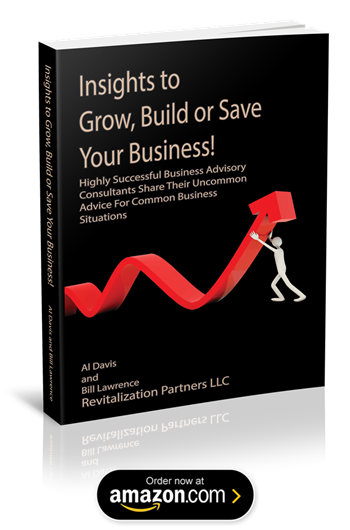Executives in middle-market companies, as well as the law firms that advise them, are hearing a common refrain these days when it comes to AI: “Just try something.”
On the surface, that advice feels safe—low stakes, exploratory, and positioned as a way to “learn.” But in practice, these pilots rarely scale. They don’t stick, and they don’t solve the pressures that matter at the board level.
The question isn’t whether to experiment with AI; it’s how to implement AI to deliver monetized outcomes—reducing cost, streamlining work, or freeing leadership to focus on growth. If it’s not doing those things, it isn’t strategy. It’s distraction.
For most companies or firms, the entry point to AI isn’t curiosity about the technology—it’s pressure. Margins are tight, staffing is thin, and operational bottlenecks consume leadership bandwidth. One services firm we reviewed offers a clear example.
The Value of Time and Money
 The finance team was spending forty to sixty hours every month reconciling time data, vendor invoices, and payroll feeds. The work sprawled across spreadsheets and consumed not only staff capacity but also the attention of leaders who were pulled into chasing errors instead of managing growth.
The finance team was spending forty to sixty hours every month reconciling time data, vendor invoices, and payroll feeds. The work sprawled across spreadsheets and consumed not only staff capacity but also the attention of leaders who were pulled into chasing errors instead of managing growth.
Rather than running a pilot, the company made a business decision. They embedded an AI-enabled accelerator directly into the reconciliation process. The system compared structured datasets, flagged discrepancies, and routed them through a governed workflow. What once consumed a full week of staff time now took only hours.
Humans in the Loop
Importantly, the solution was never about removing people from the process. Instead, it rebalanced the work. Roughly three-quarters of reconciliation tasks were handled automatically, while the remaining quarter required human judgment—reviewing exceptions, confirming edge cases, and signing off on final adjustments.
 That balance preserved accuracy and kept staff in control. Employees didn’t feel displaced; they felt empowered. The system took on repetitive labor, while people remained responsible for the decisions.
That balance preserved accuracy and kept staff in control. Employees didn’t feel displaced; they felt empowered. The system took on repetitive labor, while people remained responsible for the decisions.
The payoff was immediate and tangible. Cutting forty to sixty hours a month translated into $5,000 to $7,500 in direct labor savings each cycle. On an annual basis, the direct benefit ultimately climbed well into the low six figures—before counting the added value of leadership time redirected to growth initiatives.
And unlike a pilot that ends when the test is over, the system continues to deliver results month after month. Each cycle runs faster, every exception is logged with an audit trail, and staff time is consistently freed for higher-value work. The return doesn’t just add up—it compounds.
Setting Up Guard Rails
AI Governance was built into the process rather than layered on top of it. Oversight that sits outside the workflow rarely endures.
 In this case, every flagged discrepancy generated a digital record, and every adjustment was logged as part of execution. Risk management was not bolted on after the fact. It was integrated in real time, inside the process itself.
In this case, every flagged discrepancy generated a digital record, and every adjustment was logged as part of execution. Risk management was not bolted on after the fact. It was integrated in real time, inside the process itself.
We recommend middle-market businesses avoid policy-intensive approaches to AI governance—whether guided by committees, an internal department, or a soon-to-be obsolete procedure manual. AI is evolving too quickly for that framework to be effective.
That said, with disciplines such as strategy and purpose, accountability, and change management, make sure necessary legal compliance guidelines are in place. A good business attorney, working collaboratively with an AI subject matter expert who knows where embedded risks lie, is essential to that process.
Trust + Results = Lasting Change
Innovation only sticks when people believe in it. The finance staff trusted the accelerator because the 75/25 model showed them that they were still central to the process. They saw value immediately—hours of manual work reduced to minutes—while retaining ownership of the outcomes. That clarity of purpose, combined with visible results, created conviction far faster than any training program or pilot ever could.
 What distinguished this initiative from a typical pilot was its ability to scale. Small tests often solve one problem, in one department, for one cycle, and then collapse when pushed further. The reconciliation accelerator adapted across multiple systems—vendors, payroll, internal time reporting—without reengineering workflows.
What distinguished this initiative from a typical pilot was its ability to scale. Small tests often solve one problem, in one department, for one cycle, and then collapse when pushed further. The reconciliation accelerator adapted across multiple systems—vendors, payroll, internal time reporting—without reengineering workflows.
It did what the current generation of AI does best. It identified patterns amongst GBs of data faster than has ever been possible before, and produced audit-ready records and expanded staff capacity instead of consuming it. That durability made it part of the business model, not a temporary experiment.
The lesson for boards is clear: AI is not a side project. It is a strategic business decision with recurring impact. The reconciliation accelerator shows what happens when AI is aimed at the right pressure point. Cost came down. Cycles accelerated. Annual savings reached six figures. And the payoff continues.
Boards and CEOs must now decide whether they are satisfied with the safety of pilots or ready for the discipline of systems that scale, compound in value, and address real business pressures. Pilots may feel safe. However, business decisions are what create lasting value.
About Pat Scanlon Pat Scanlon is the Director of Revitalization Partners’ (RP) Business Transformation Practice. RP specializes in complex business restructuring and receiverships. Pat brings extensive experience in leading organizational change and optimizing operations through innovation and data-driven transformation.



